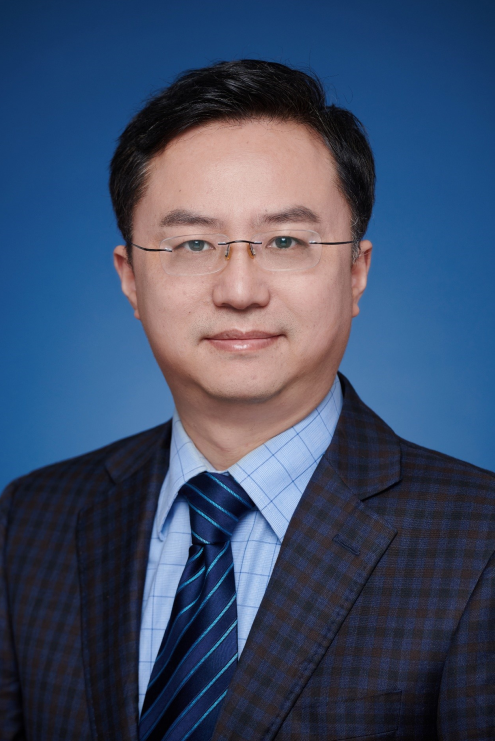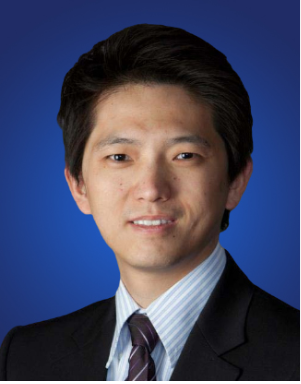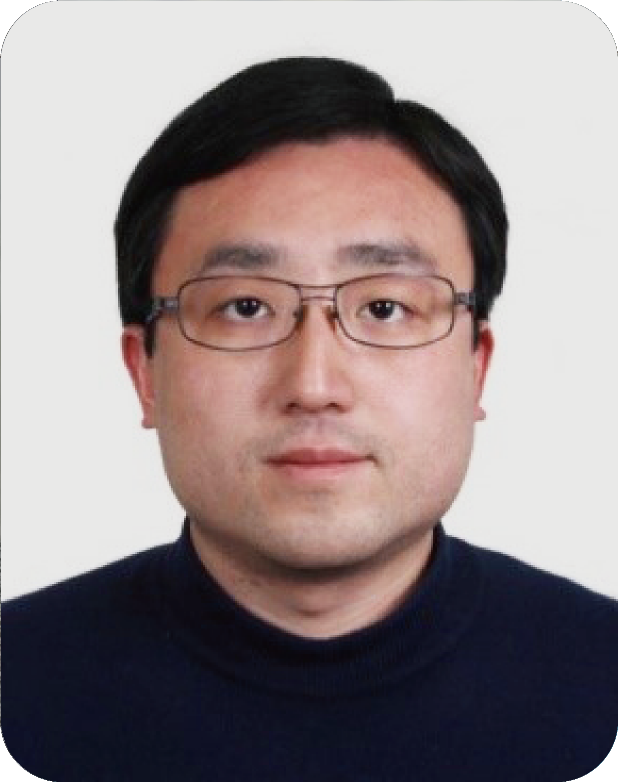
EIECC 2023

Prof. Sun-Yuan Kung
Princeton University, USA (Life Fellow of IEEE)
Title: The Age of AI
Abstract: This talk will cover the evolution of AI; presents its potential challenge toward general intelligence; and projects future education on data science.Neural networks (NNs) have played pivotal role in our smooth sailing from rule-based AI1.0 to data-driven AI2.0. Thus, we shall first review the history of deep learning networks covering MLP (NN1.0), CNN, (NN2.0) and transformers (NN3.0) and then address a frequently asked question: “are neural networks biologically inspired?”Admittedly, NN’s parameter learning paradigm, i.e. back-propagation is anything but bio-inspired. Nevertheless, for the structural learning paradigm, we can benefit greatly from some relevant biological clues. Note that meaningful learning only starts when we are from age 6 to 14 years old. During that period, our brain learns to prune out useless synaptic connections, making it more intelligent. This prompts us a Regressive Neural Architectural Search learning paradigm, effective for network structural optimization for MLPs, CNNs, and transformers.Today’s AI excels in converting Data to Knowledge (D2K). Thus, it is only amenable to ASI (artificial special intelligence), because it can do certain tasks very well but other tasks rather poorly. In order to advance from ASI to AGI (Artificial General Intelligence), it will also necessitate the ``K2K” ability (Knowledge to Knowledge) so as to enable us to infer new knowledge from old knowledge. Unfortunately, there are still quite a few weak or missing Links in today’s AI. For example, we shall explain why the current generative AIs (e.g. GPT4 and Gemini) suffer from their weak link in conducting scientific inference and logical reasoning.
Finally, we will highlight the insightful assertion by the California’s Board of Education that ``data science as an alternative to algebra diverts students from obtaining mathematical skills required for a broad range of careers”. More generally, math will unequivocally be the key cornerstone of the future AI. As such, we will need a far-vision and long-term teaching curricular in order to better prepare our data science and AI education!
S.Y. Kung, Life Fellow of IEEE, is a Professor of Electrical and Computer Engineering at the Princeton University. His research areas include VLSI array processors, AI algorithms, machine learning, deep learning networks, neural architectural search, and compressive privacy. He was a founding member of several Technical Committees of the IEEE Signal Processing Society. He was elected to Fellow of IEEE in 1988 and served as a Member of the Board of Governors of the IEEE Signal Processing Society (1989-1991). He was a recipient of IEEE Signal Processing Society's Technical Achievement Award for the contributions on "parallel processing and neural network algorithms for signal processing" (1992); a Distinguished Lecturer of IEEE Signal Processing Society (1994); a recipient of IEEE Signal Processing Society's Best Paper Award (1996); IEEE Third Millennium Medal (2000), and CIE-GNYC’s Asian American Engineer of the Year Award (2023). Since 1990, he has been the Editor-In-Chief of the Journal of VLSI Signal Processing Systems. He has authored and co-authored more than 500 technical publications and numerous textbooks including ``VLSI Array Processors'', Prentice-Hall (1988); ``Digital Neural Networks'', Prentice-Hall (1994) ; ``Principal Component Neural Networks'', John-Wiley (1996); ``Biometric Authentication: A Machine Learning Approach'', Prentice-Hall (2004); and ``Kernel Methods and Machine Learning”, Cambridge University Press (2014).

Prof. Xiaohu Ge
Huazhong University of Science and Technology, China (IET Fellow)
Title: Carbon Emission Efficiency Modeling and Optimization of Solar-Powered Cellular Networks
Abstract:
With the rapid growth of wireless communication traffic, the carbon emissions caused by the communication industry are also increasing. To meet the requirement of "carbon neutrality", more and more studies are considering using renewable energy to power cellular networks, achieving the purpose of reducing carbon emissions. However, when using renewable energy to supply energy to the cellular network, due to the randomness of the energy consumption of the cellular network and the power generated by the generation system of renewable energy, there is a problem of incompatibility, resulting in low renewable energy utilization and low carbon emissions efficiency. In this paper, based on the practical data of solar radiation, a carbon efficiency model of the solar-powered cellular network is constructed. Based on the convex optimization theory and the Dinkelbach algorithm, a mechanism for alternately optimizing the renewable energy network and the cellular network is proposed, and a carbon emissions efficiency optimization algorithm is designed. The simulation results show that when the storage capacity of the battery is 2000Wh, the initial value of energy in the battery is 250Wh, and the number of photovoltaic panels is 2, compared with the solar-powered cellular network without the optimization algorithm, the accumulation of the carbon emissions in one day is 38.49% lower, and the average hourly carbon emissions efficiency of the cellular network is 64.31% higher.
Xiaohu Ge received the Ph.D.degree in communication and information engineeringfrom the Huazhong University of Scienceand Technology (HUST), China, in 2003. He has been worked with HUST, since November2005. Prior to that, he worked as a Researcher at Ajou University, South Korea, and the Politecnico Di Torino,Italy, from January 2004 to October 2005. He is currently a full Professorwith the School of Electronic Information and Communications,HUST. He is also an Adjunct Professor with the Faculty of Engineeringand Information Technology, University of Technology Sydney (UTS), Australia. He has published more than 200 SCI academic papers, with more than 10,000 citations from Google Scholar, including several best papers of the IEEE Communications Society. He is the Chinese representative of the International Federation for Information Processing (IFIP), the Fellow of the IET, the editor of IEEE Wireless Communications, IEEE Transactions on Vehicular Technology, etc.. He serves as the symposium chair of more than 30 international conferences such as IEEE ICC and IEEE GlobeCom.

Prof. Jun Zhang
Wuhan University, China
He is a professor (tenured), a doctoral director, and a title professor of "Wuhan University" at the School of Electricity and Automation, Wuhan University. Prof Zhang Jun is currently Deputy Secretary General of the Chinese Society of Automation, Deputy Editor-in-Chief of the Journal of Intelligent Science and Technology, member of the Editorial Board of the Journal of Automation, and member of the Editorial Board of the Journal of Command and Control. Meanwhile, he serves as a member of the Editorial Board of IEEE TCSS and IEEE IoT Magazine; as the Co-Program Chair of DTPI 2021 and 2022, the Paper Chair of NAPS 2016, the Academic Associate Director of ISSISP 2019, and the Program Chair of IEEE SOLI 2019, and organises a number of international academic activities as a core staff.Research Project Status and Achievements:After returning to China in 2018, he has presided over or participated in more than twenty national, provincial, ministerial and power industry science and technology projects.

Prof. Wei Wang
East China Normal University
University of Florida, Visiting Research Scholar, USA
University of Wisconsin- Madison, Honorary Fellow, USA
Senior Member of CCF, Member of CCF Open Source Development Committee, Member of CCF Education Committee.
Founder of X-lab Open Lab, Vice President of Open Source Society (2022)
Expert consultant of open source governance standard system construction of the Standards Institute, member of the technical committee of Mulan open source community.
He has presided over and participated in more than 20 vertical research projects, such as national key R&D projects, sub-projects of national 863 program, and projects of National Natural Science Foundation of China (youth, surface and key), etc. He has been engaged in open source consulting services for enterprises and institutions, such as Alibaba, Tencent, Huawei, Baidu, Chinese Academy of Sciences, Institute of Standards, and Magnolia, etc..
He has published and co-authored more than 100 academic papers in international journals such as IEEE Transaction Series, Science in China, Journal of Computing, etc., domestic core journals, and international and domestic academic conferences.

Prof. Bo Dong
Shenzhen Technology University
Bo Dong, Male, a distinguished professor at Shenzhen Technology University, a member of the First Action Hundred Talents Program B of the Chinese Academy of Sciences, the Peacock Program B of Shenzhen City, an expert in the evaluation of the National Science and Technology Progress Award, and a technical expert in the National Key R&D Program. Received a Ph.D. in Optics from Nankai University and the second Ph.D. in Electronic and Computer Engineering from the National University of Singapore. Previously served as a postdoctoral fellow at Laurier University in Canada and a scientist at the A * STAR Institute for InfoComm Research in Singapore. Led and participated multiple cooperation projects with Canadian NRSERC, Singapore NRF, China 863, National Natural Science Foundation of China, Guangdong Province, Chinese Academy of Sciences, as well as European Airbus, Singapore ST, Singapore SMRT, and other enterprises. Achieved a series of innovative results in new photonic integrated devices and applications, as well as optoelectronic detection. Published over 100 papers in internationally renowned optoelectronic journals, applied for 21 patents, and granted 10 patents. One project achievements won the 2013 ASEAN Outstanding Engineering Achievement Award and the Singapore Outstanding Engineering Achievement Award. Invited to give invitation speeches at over 10 international conferences, serving as chairpersons and technical committee members for over 10 international conference branches. Previously served as the Topical Editor for Applied Optics, a renowned optoelectronic journal under Optica, and as an editorial board member for Structural Monitoring and Maintenance, a journal under KAIST.